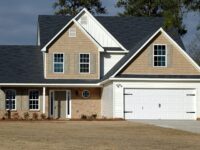The following contribution is from another author.
Maintaining the integrity of a home’s roof is essential in safeguarding the structure from the elements. Over time, exposure to sun, rain, and seasonal changes can wear down roofing materials, leading to leaks and costly water damage. Homeowners can extend the life of their roofs and ensure their longevity through regular inspection and maintenance. Recognizing the early signs of roof deterioration, such as missing shingles or granules in the gutters, can prompt timely interventions that prevent minor issues from escalating into major repairs.
An effective roofing maintenance plan includes cleaning gutters, trimming overhanging tree branches, and checking for signs of moss or algae growth. Homeowners should also be aware of the role proper insulation and ventilation play in preventing ice dams and condensation, both of which can cause serious damage to the roof structure. Conducting a visual inspection from the ground or by using binoculars can highlight potential problems, but for safety and thoroughness, occasionally hiring a professional is advised.
Periodic professional assessments complement a homeowner’s regular maintenance checks. These evaluations can reveal hidden damage and provide an opportunity to replace sealant, address flashing issues, and repair minor defects. Through consistent maintenance efforts, homeowners can prevent small imperfections from turning into substantial structural and interior damage, ultimately saving money and preserving the roof’s condition for years to come.
Essential Roofing Maintenance
Maintaining a roof is critical to prolong its lifespan and ensure the safety of your home. This section discusses key steps homeowners should take to keep their roofing system in top condition. Click here to learn more.
Inspect Your Roof Regularly
Homeowners should conduct biannual inspections of their roof, ideally in the spring and fall, to spot any potential issues. Look for missing, damaged, or curling shingles, as well as signs of leakage or water damage in the attic. Utilize a checklist to ensure all elements are reviewed thoroughly.
Clean Gutters and Downspouts
Keeping gutters and downspouts clear is vital for preventing water damage. Leaves and debris should be removed at least twice a year, or more frequently if surrounded by heavy vegetation. Clogged gutters can lead to water backing up, which may cause damage to the roof and the underlying structure.
- Clear debris from gutters and downspouts.
- Inspect for proper water flow.
- Repair any leaks or misalignments.
Trim Overhanging Branches
Trees near your home can pose a risk to your roof. Branches that hang over the roof should be trimmed back to prevent damage from falling limbs or abrasion from leaves and branches. This also reduces the accumulation of leaf debris on the roof surface, helping to prevent mold and moss growth.
- Trim branches that come within six feet of your roof.
- Check for and remove any vegetation growing on the roof.
Preventative Measures and Repairs
Maintaining a roof’s condition requires timely interventions and routine inspections to prevent larger issues. Thorough and regular maintenance extends the roof’s lifespan and ensures the safety and comfort of a home.
Address Leaks Immediately
When leaks occur, homeowners should act promptly to avoid structural damage. A leak should be marked and monitored, and if it progresses, professional repair is necessary to prevent water infiltration, which can lead to mold, mildew, or rot.
Check for Missing or Damaged Shingles
Regular inspections for missing or damaged shingles are vital. Homeowners should:
- Examine their roof after severe weather.
- Look for shingles that are cracked, bent, or absent.
- Replace compromised shingles immediately to prevent water damage.
Seal Flashings and Vents
Flashings and vents are common areas for leaks. Homeowners ought to:
- Verify the integrity of sealants around these areas.
- Reapply caulk or roof cement where necessary.
- Ensure seals are intact and functional to prevent leaks.
Schedule Professional Inspections
Professionals can identify issues that untrained eyes may miss. Homeowners are advised to:
- Schedule inspections at least once a year.
- Follow a maintenance plan as recommended by roofing experts.
- Address any recommendations promptly to avoid further complications.
















